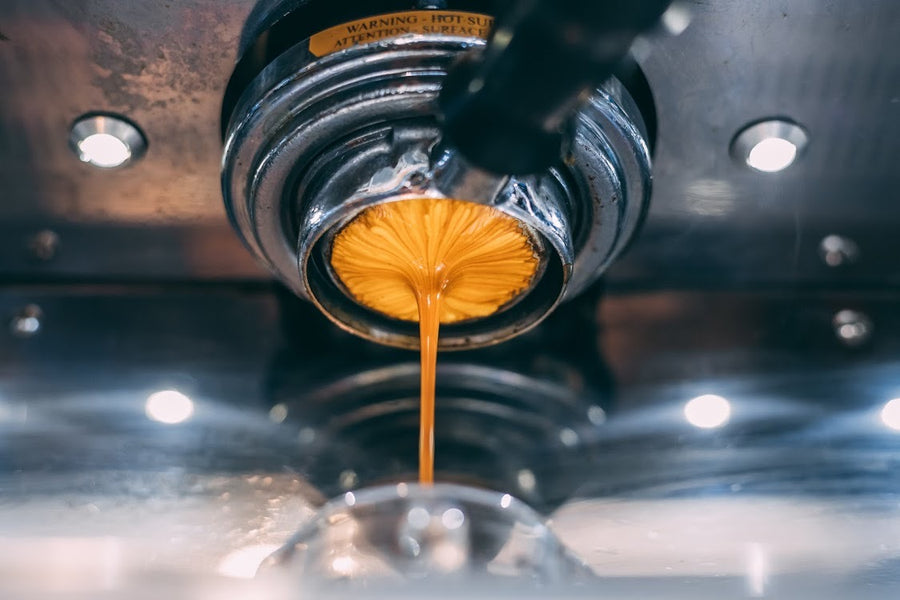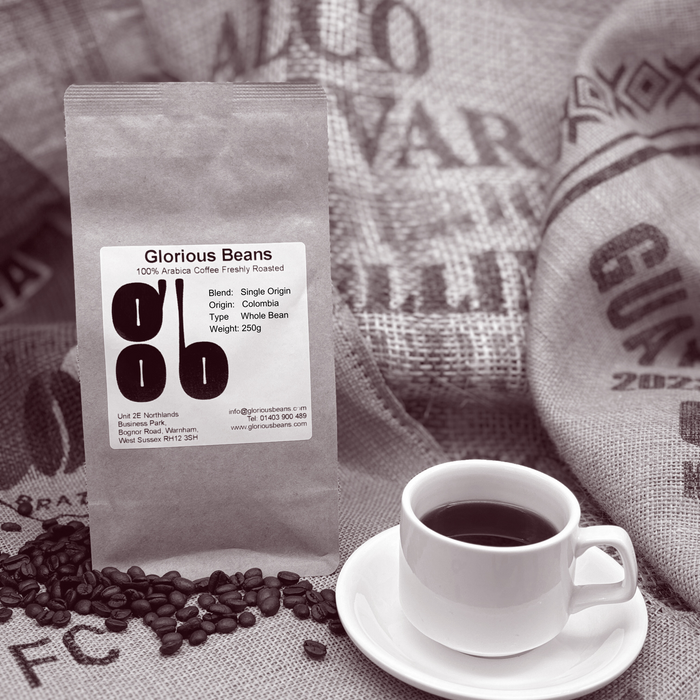What Makes SOE Single Origin Espresso Different from Mixed Roasts
What Makes SOE Single Origin Espresso Different from Mixed Roasts
Blog Article
Understanding Coffee Beans: the Journey From Coffee to Blended Coffee Beans

The Origins of Coffee: An International Point Of View
While you may think of coffee as a modern staple, its origins trace back centuries, linking with cultures throughout the globe. The story begins in Ethiopia, where legend claims a goat herder called Kaldi found the energizing impacts of coffee beans after noticing his goats frolicking vigorously after eating them.
As trade routes expanded, coffee made its method to Europe in the 17th century, rapidly acquiring popularity. Each culture added its distinct twist to coffee preparation, enhancing its history.
Growing and Harvesting of Coffee Beans
As coffee's journey progressed, the focus moved to the cultivation and harvesting of certain bean varieties, especially those used for coffee. You'll locate that espresso beans often originate from Arabica or Robusta plants, each offering distinct flavors. The optimal growing conditions include high elevations and rich, well-drained dirt, which enhance the beans' high quality.
Throughout the harvest, picking methods differ. Timing is important; you desire to harvest when the cherries reach peak ripeness for maximum flavor.
Once gathered, the beans are prepared for processing, which is necessary in identifying their last taste. Understanding the farming and gathering procedures gives you insight into what enters into your favored espresso, enhancing your gratitude for each and every cup.
Handling Methods: From Cherry to Bean
Since you have actually learnt more about harvesting espresso beans, let's check out how those cherries change right into the coffee beans you like. You'll see exactly how different harvesting techniques effect taste, complied with by the important steps of fermentation and drying. We'll break down the milling and grading process that determines your coffee's top quality.
Gathering Techniques Explained
When it comes to coffee, understanding harvesting strategies is important, since they directly affect the flavor and high quality of the beans you appreciate. Discerning selecting entails hand-picking only ripe cherries, ensuring you get the best quality beans. Ultimately, the option of gathering method can greatly influence your coffee experience, so it's worth knowing exactly how those beans made it to your cup.
Fermentation and Drying Out
After harvesting, the following actions in handling coffee beans play a significant role fit their taste. You'll locate that fermentation is essential, as it assists damage down the mucilage surrounding the beans, improving their preference account. Depending on the method, this procedure can last from a few hours to several days, with varying results based on temperature and moisture.
As soon as fermentation is total, drying out adheres to, which is equally crucial. You can select from mechanical or sun-drying drying out methods. Sun-drying enables the beans to take in flavors from the environment, while mechanical drying guarantees consistent dampness degrees no matter weather. Correct drying is vital to avoid mold and preserve the beans' top quality, inevitably affecting your mug of coffee.
Milling and Grading Process
As fermentation and drying out established the stage for taste development, the milling and grading procedure assurances that only the ideal coffee beans make it to your mug. This phase entails removing the external layers of the coffee cherry, including the parchment and husk. Premium beans get a higher quality, resulting in a richer coffee experience.
Toasting Techniques: Opening Taste Potential
When you roast coffee beans, the approach you choose can significantly affect the flavor account. Comprehending the partnership in between time, temperature, and roasting methods is crucial to exposing the potential of your mixture. Let's discover exactly how these elements collaborated to create the ideal cup.
Toasting Methods Explained
While you may think that all coffee toasting approaches generate the exact same results, the reality is that each method exposes one-of-a-kind flavor potentials in the beans. You can pick between methods like drum toasting, air roasting, or perhaps standard frying pan roasting. Drum roasting uses a rotating drum to evenly distribute warmth, boosting caramelization and creating a well balanced taste. Air roasting, on the other hand, distributes hot air around the beans, advertising a lighter roast with obvious level of acidity. Frying pan toasting enables hands-on control yet calls for constant focus to avoid burning. Each technique has its nuances, so trying out with various techniques can aid you uncover the excellent roast that straightens with your preference preferences. Appreciate the trip of discovering your suitable mug!

Effect on Taste Profile
Different roasting methods not just influence the procedure but additionally greatly impact the taste account of the coffee beans. Dark roasts, on the various other hand, bring out vibrant, smoky flavors, sometimes covering up the bean's one-of-a-kind attributes. Understanding these nuances aids you appreciate the creativity behind your cup of coffee, enhancing your total experience with every sip.
Time and Temperature Factors
To launch the complete flavor potential of coffee beans, both time and temperature level throughout the toasting process play substantial duties. When toasting, you'll locate that higher Check This Out temperature levels can swiftly develop flavors, but if you hurry it, you could end up with burned notes. On the other hand, reduced temperature levels permit an extra gradual taste advancement, showcasing the beans' unique characteristics.

Timing is just as vital; prolonging the roast also long can cause a loss of acidity and brightness, while also brief a roast might leave the beans underdeveloped. Finding that pleasant spot requires practice and testing. By readjusting these elements, you can reveal the abundant, complicated flavors concealed within each bean, creating a truly impressive coffee experience.
The Art of Mixing: Crafting One-of-a-kind Coffee Profiles

Begin by picking a base coffee that supplies a strong structure. Pick corresponding beans to boost certain flavor notes. A brilliant Ethiopian bean can bring fruitiness, while an abundant Brazilian coffee adds body. Experimentation is crucial-- do not hesitate to adjust proportions up until you locate your excellent profile.
As you blend, bear in mind that each mix narrates. You're not just making coffee; you're creating an experience. So, take your time, taste often, and take pleasure in the trip of uncovering your trademark blend.
Brewing Techniques: Just How Preparation Impacts Taste
Mixing coffee opens up a domain name of taste opportunities, but how you brew that mix can significantly influence your last cup. On the other hand, a pour-over highlights the coffee's clearness and illumination, perfect for showcasing fragile notes.
Espresso, with its high pressure, creates a concentrated shot that emphasizes sweetness and crema. If you favor a lighter mixture, consider a cool mixture method; it produces a smooth, much less acidic taste.
Adjusting variables like water temperature, grind dimension, and brew time can change your coffee's profile. Embrace the art of developing to find the tastes hidden in your coffee blends.
The Future of Coffee: Sustainability and Innovation
As the coffee industry develops, sustainability and technology are becoming important for attending to ecological challenges and meeting customer demands. You'll discover that more coffee companies are adopting green methods, from sourcing beans ethically to applying sustainable farming strategies. These shifts not only aid the Homepage world but additionally boost the top quality of the coffee you appreciate.
You could see advancements like biodegradable packaging and water-saving developing approaches that minimize waste. Advanced innovation, such as blockchain, is additionally ending up being preferred, guaranteeing transparency in the supply chain, which enables you to map your coffee back to its origins.
In enhancement, purchasing neighborhood neighborhoods and sustaining farmers with reasonable trade campaigns fosters an extra sustainable coffee community. As you sip your following cup, bear in mind that you could try here your selections can add to a brighter future for coffee. By choosing for sustainable brands, you're not just enjoying a beverage; you're making a favorable influence on the globe.
Regularly Asked Questions
What Is the Distinction Between Arabica and Robusta Beans?
Arabica beans are smoother, sweeter, and have a higher level of acidity, while robusta beans are more powerful, more bitter, and include even more high levels of caffeine. When making your coffee., you'll observe these differences in flavor and fragrance.
Just How Does Altitude Affect Coffee Bean Taste?
Elevation impacts coffee bean taste substantially. Greater altitudes generate beans with brighter acidity and complex tastes, while reduced altitudes often generate beans that are heavier and less nuanced. You'll discover these differences in your mug!
What Are the Health And Wellness Perks of Alcohol Consumption Coffee?
Drinking coffee can improve your energy, enhance psychological emphasis, and even enhance physical performance. It's rich in anti-oxidants, might decrease the threat of particular conditions, and can advertise a much healthier metabolic rate when eaten in small amounts.
Can Coffee Beans Be Recycled for Brewing?
Yes, you can reuse coffee beans for brewing, however the flavor may be weaker. If you appreciate experimenting, try recycling them in different methods, like cool mixtures or contributing to smoothies for an additional kick.
How Should I Store Coffee Beans for Quality?
To maintain your coffee beans fresh, save them in an airtight container in a great, dark place. Stay clear of revealing them to dampness, light, or heat, as these factors can rapidly weaken their taste and scent.
Comprehending Coffee Beans: the Journey From Coffee to Blended Coffee Beans.
Now that you have actually discovered concerning collecting espresso beans, let's explore just how those cherries change into the coffee beans you love.When you roast coffee beans, the technique you choose can drastically impact the taste profile - Single Origin Espresso.While you may believe that all coffee toasting methods generate the same outcomes, the reality is that each technique reveals one-of-a-kind taste possibilities in the beans.Various toasting methods not just affect the procedure however likewise greatly influence the taste account of the coffee beans
Report this page